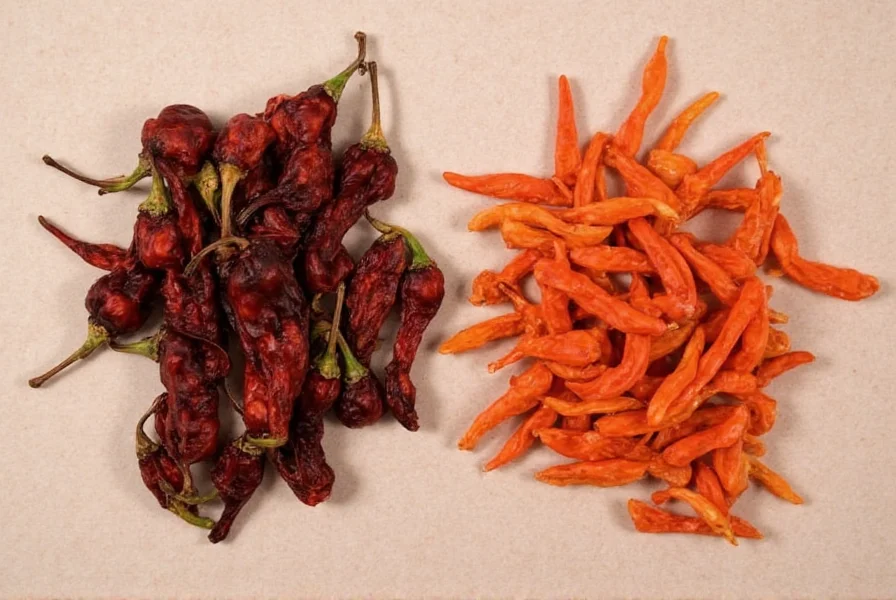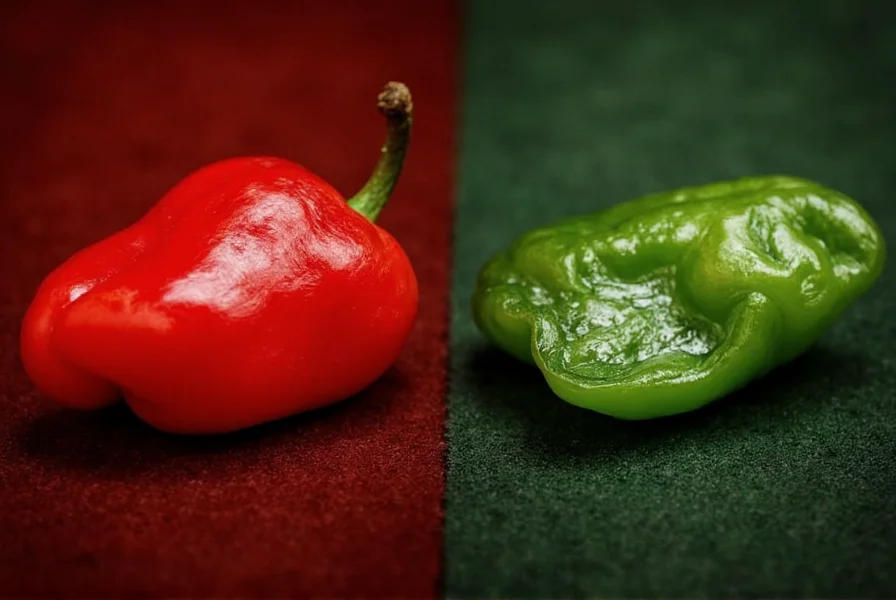When exploring the world of superhot peppers, two varieties consistently dominate conversations among chili enthusiasts: the scorpion pepper and the ghost pepper. Understanding their differences is crucial for both culinary adventurers and gardening enthusiasts seeking to incorporate these fiery ingredients safely and effectively.
Understanding Superhot Pepper Measurements
Before diving into specific comparisons, it's essential to understand how we measure pepper heat. The Scoville scale, developed by Wilbur Scoville in 1912, quantifies capsaicin concentration—the compound responsible for that burning sensation. Modern testing uses high-performance liquid chromatography (HPLC) for more precise measurements, but Scoville Heat Units (SHU) remain the standard reference.
Scorpion Pepper Characteristics
The Trinidad Moruga Scorpion, named for its stinger-like tail, originated in Trinidad and Tobago. This pepper earned Guinness World Records recognition as the world's hottest between 2012-2013. Its heat isn't just intense—it builds gradually, creating a prolonged burning sensation that can last up to 30 minutes. The flavor profile reveals initial fruity notes of apricot and citrus before the intense heat takes over.
| Pepper Variety | Scoville Range (SHU) | Average Heat | Origin |
|---|---|---|---|
| Trinidad Moruga Scorpion | 1,200,000-2,000,000 | 1.6 million SHU | Trinidad and Tobago |
| Ghost Pepper (Bhut Jolokia) | 855,000-1,041,427 | 950,000 SHU | India |
| Habanero Pepper | 100,000-350,000 | 225,000 SHU | Mexico/Caribbean |
Ghost Pepper Characteristics
The Ghost pepper, or Bhut Jolokia, gained international attention after researchers at New Mexico State University verified its extreme heat in 2007. Native to northeastern India, this pepper delivers an immediate, intense burn that peaks quickly compared to the scorpion's delayed but longer-lasting fire. Ghost peppers feature a distinctive smoky, slightly sweet flavor with underlying notes of fruit and floral undertones.
Physical Differences Between Scorpion and Ghost Peppers
Visually distinguishing these peppers helps prevent accidental extreme heat encounters. Scorpion peppers typically grow 1.5-2 inches long with a distinctive stinger-shaped tail and bumpy, wrinkled skin. They mature from green to vibrant red, though yellow and chocolate varieties exist. Ghost peppers reach 2.5-3.3 inches with a more tapered, wrinkled appearance and usually ripen to a bright red, though orange and yellow variants occur.

Culinary Applications: When to Use Which Pepper
Understanding scorpion pepper vs ghost pepper culinary uses prevents recipe disasters. The ghost pepper's more manageable heat makes it suitable for hot sauces, marinades, and spice rubs where you want noticeable heat without overwhelming other flavors. Many commercial hot sauces use ghost peppers as their base heat source.
Scorpion peppers require extreme caution—just 1/4 teaspoon can transform a dish. Chefs typically use them in minute quantities for specialty hot sauces, infused oils, or as a finishing touch to extremely spicy dishes. Never add scorpion peppers directly to recipes without precise measurement tools.
Safety Considerations for Handling Superhot Peppers
Working with either pepper demands serious safety precautions. Always wear nitrile gloves when handling, avoid touching your face, and work in well-ventilated areas. The capsaicin in scorpion peppers can become airborne, causing respiratory irritation. Never use plastic gloves—capsaicin can penetrate them. After handling, clean all surfaces with soapy water or specialized capsaicin removers.
Ghost peppers, while still requiring caution, present less risk of airborne capsaicin. Both peppers can cause severe skin irritation, but scorpion pepper exposure often requires medical attention due to the intensity and duration of the burn.
Growing Conditions and Plant Characteristics
Gardeners interested in cultivating these peppers should understand their different growing requirements. Scorpion pepper plants grow 3-4 feet tall with dark green leaves and produce peppers that hang downward. They require 90-150 days to mature and prefer warm, humid climates with consistent moisture.
Ghost pepper plants reach 2-3 feet in height with lighter green foliage. They mature slightly faster (85-120 days) and demonstrate better adaptability to varying climate conditions. Both varieties need well-draining soil and plenty of sunlight, but ghost peppers prove more forgiving for novice growers.
Availability and Purchasing Options
Finding fresh scorpion peppers remains challenging outside specialty markets, while ghost peppers have become increasingly available in grocery stores and farmers markets. Dried versions of both peppers appear in spice sections, but verify authenticity—many products mislabel heat levels. Reputable online retailers offer pepper seeds, dried peppers, and extracts with verified Scoville ratings.

Making the Right Choice for Your Needs
Selecting between scorpion pepper vs ghost pepper depends entirely on your heat tolerance and intended use. Home cooks experimenting with extreme heat should start with ghost peppers before progressing to scorpions. Professional chefs creating signature hot sauces might blend both peppers to achieve complex heat profiles. Remember that individual pepper heat varies significantly—even within the same plant—so always test small quantities first.
Frequently Asked Questions
Which pepper is hotter, scorpion or ghost pepper?
The Trinidad Moruga Scorpion pepper (1.2-2 million SHU) is significantly hotter than the Ghost pepper (855,000-1,041,427 SHU). Scorpion peppers typically measure 20-50% hotter on the Scoville scale, making them one of the world's hottest edible peppers while Ghost peppers represent the upper tier of commercially available superhots.
Can you substitute ghost pepper for scorpion pepper in recipes?
Substituting requires careful adjustment—use approximately 1.5 times more ghost pepper to match scorpion pepper heat. However, flavor differences mean substitutions won't be perfect. For extreme heat recipes designed for scorpion peppers, consider whether ghost peppers will provide sufficient intensity before substituting.
What's the best way to neutralize scorpion or ghost pepper burn?
Milk, yogurt, or other dairy products containing casein effectively break down capsaicin. Sugar or honey can help with mouth burns, while dish soap and cold water work for skin exposure. Avoid water alone, as it spreads capsaicin. For severe reactions, seek medical attention—scorpion pepper burns sometimes require professional treatment.
How do scorpion and ghost peppers differ in flavor profile?
Ghost peppers offer immediate smoky, sweet heat with fruity undertones, while scorpion peppers deliver delayed but longer-lasting fire with initial fruity notes of apricot and citrus. Scorpion heat builds gradually over 5-10 minutes and can last up to 30 minutes, whereas ghost pepper heat peaks quickly but subsides faster.











 浙公网安备
33010002000092号
浙公网安备
33010002000092号 浙B2-20120091-4
浙B2-20120091-4